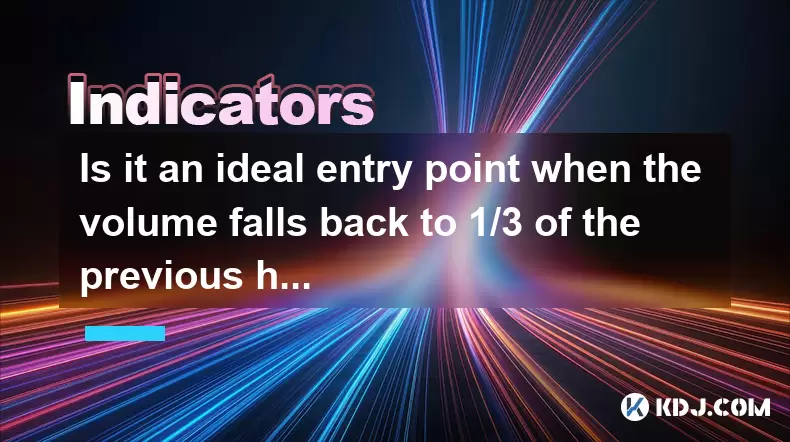-
 Bitcoin
Bitcoin $107,965.5977
-1.49% -
 Ethereum
Ethereum $2,537.2130
-1.84% -
 Tether USDt
Tether USDt $1.0000
-0.01% -
 XRP
XRP $2.2608
-0.71% -
 BNB
BNB $659.3980
-0.36% -
 Solana
Solana $148.7394
-2.41% -
 USDC
USDC $1.0000
0.01% -
 TRON
TRON $0.2873
-0.36% -
 Dogecoin
Dogecoin $0.1679
-4.64% -
 Cardano
Cardano $0.5763
-2.71% -
 Hyperliquid
Hyperliquid $37.4767
-6.61% -
 Bitcoin Cash
Bitcoin Cash $496.1888
-0.42% -
 Sui
Sui $2.8545
-3.01% -
 Chainlink
Chainlink $13.2532
-2.61% -
 UNUS SED LEO
UNUS SED LEO $9.0537
0.09% -
 Stellar
Stellar $0.2467
-2.27% -
 Avalanche
Avalanche $17.8240
-3.64% -
 Shiba Inu
Shiba Inu $0.0...01160
-2.60% -
 Toncoin
Toncoin $2.7443
-3.31% -
 Hedera
Hedera $0.1560
-2.71% -
 Litecoin
Litecoin $85.9596
-2.27% -
 Monero
Monero $315.7623
-2.23% -
 Dai
Dai $1.0000
-0.01% -
 Polkadot
Polkadot $3.3513
-2.20% -
 Ethena USDe
Ethena USDe $1.0001
0.03% -
 Bitget Token
Bitget Token $4.2992
-3.24% -
 Uniswap
Uniswap $7.3735
-1.54% -
 Aave
Aave $278.5274
-3.41% -
 Pepe
Pepe $0.0...09849
-3.52% -
 Pi
Pi $0.4560
-3.35%
Is it an ideal entry point when the volume falls back to 1/3 of the previous high when breaking through the neckline?
2025/06/30 03:01

Understanding the Neckline in Technical Analysis
In technical analysis, the neckline is a critical support or resistance level that appears in chart patterns such as head and shoulders, double tops, and double bottoms. When a price breaks through this level, it often signals a potential trend reversal. Traders closely monitor these breakouts to determine entry points. However, volume plays a crucial role in confirming the validity of such breakouts.
When analyzing a breakout, traders often look for an increase in trading volume to confirm the strength behind the move. A breakout accompanied by high volume suggests strong market conviction. In contrast, a breakout with low volume may indicate weak participation and could lead to false signals or failed breakouts.
The Significance of Volume During Breakouts
Volume is considered a leading indicator because it often changes before price does. When evaluating a neckline breakout, traders pay close attention to how volume behaves during and after the breakout. Typically, a healthy breakout should be supported by a surge in volume. If volume remains flat or declines significantly, it raises concerns about the sustainability of the move.
Some traders use volume filters to assess whether a breakout is legitimate. One such filter involves comparing current volume levels to previous highs. Specifically, when volume drops to around 1/3 of its prior peak during a breakout, it raises questions about whether the move has enough momentum to continue.
Interpreting Low Volume During a Neckline Breakout
A scenario where volume falls back to 1/3 of its previous high during a neckline breakout can be interpreted in multiple ways:
- Lack of Conviction: If institutional players and large traders are not participating, it might suggest that the breakout lacks real demand.
- Market Indecision: Lower volume could signal hesitation among market participants, potentially leading to a pullback.
- Opportunistic Entry Point: Some traders view reduced volume as a sign that the asset is less crowded, offering a better risk-reward setup if other technical indicators align.
However, it's important to note that volume alone should not dictate trading decisions. It must be used in conjunction with price action, moving averages, and other tools to form a comprehensive trading strategy.
Historical Examples and Patterns
Examining historical data from various cryptocurrency markets reveals mixed results when volume drops to 1/3 of its previous high during a breakout. For instance, in some cases involving Bitcoin (BTC) and Ethereum (ETH), significant breakouts occurred despite lower-than-usual volume, especially during sideways consolidation phases.
Conversely, there have been instances where a breakout was quickly reversed when volume failed to pick up. These false breakouts highlight the importance of waiting for confirmation candles or retests before entering a trade.
It’s also worth noting that certain altcoins may behave differently due to lower liquidity and higher volatility. Therefore, applying the same volume criteria across all assets without considering their unique characteristics can lead to misinterpretation.
Practical Steps to Evaluate the Situation
If you're assessing whether to enter a trade based on a neckline breakout with reduced volume, follow these steps:
- Confirm the Pattern Integrity: Ensure that the chart pattern is well-defined and the neckline is clearly identifiable.
- Analyze Volume Relative to Recent Peaks: Use volume indicators like OBV (On-Balance Volume) or simple moving averages to compare current volume against recent peaks.
- Look for Price Confirmation: Wait for at least one or two closing candles above the neckline before considering entry.
- Check for Confluence with Other Indicators: Use tools like RSI, MACD, or Fibonacci retracement levels to strengthen your decision-making process.
- Set Risk Parameters: Define stop-loss and take-profit levels based on recent volatility and key support/resistance zones.
By combining volume analysis with price behavior and other technical tools, traders can avoid premature entries and improve their probability of success.
Common Misconceptions About Volume and Breakouts
Many novice traders assume that every breakout needs to be accompanied by record-high volume to be valid. This is not always the case. Markets sometimes consolidate with decreasing volume before making a powerful move. In fact, lower volume during accumulation or distribution phases can be a precursor to explosive moves later on.
Another misconception is that volume must return to previous highs immediately after the breakout. In reality, volume can remain subdued for several sessions and still result in a successful continuation of the trend, especially if the broader market sentiment supports the move.
Lastly, some believe that once a breakout occurs, they must act immediately. However, entering too early without proper confirmation can expose traders to unnecessary risks, particularly when volume is weak.
Frequently Asked Questions
Q: Can a breakout be trusted if volume doesn’t increase?
While rising volume typically confirms a breakout, it’s not the only factor. Strong price action and confluence with other indicators can still make a breakout reliable even with moderate or declining volume.
Q: How long should I wait after a breakout with low volume before entering?
It’s generally advisable to wait for at least one or two candlesticks to close beyond the neckline and observe how price reacts to the broken level as new support or resistance.
Q: Does this rule apply equally to all cryptocurrencies?
No. Larger-cap cryptocurrencies like Bitcoin and Ethereum tend to have more reliable volume signals. Smaller altcoins may exhibit erratic volume patterns due to lower liquidity and manipulation risks.
Q: Should I completely avoid trades when volume is only 1/3 of its previous high?
Not necessarily. Consider it as a cautionary signal rather than a strict rule. Evaluate the broader context including chart structure, time frame, and macro conditions before deciding.
免責聲明:info@kdj.com
所提供的資訊並非交易建議。 kDJ.com對任何基於本文提供的資訊進行的投資不承擔任何責任。加密貨幣波動性較大,建議您充分研究後謹慎投資!
如果您認為本網站使用的內容侵犯了您的版權,請立即聯絡我們(info@kdj.com),我們將及時刪除。
- Bitcoin Solaris Market Launch: A New Dawn or Just Another Altcoin?
- 2025-07-08 20:30:12
- Bitcoin, Memecoin Mania, and the All-Time High Hunt: What's Next?
- 2025-07-08 20:30:12
- Byrq Coin: Scam or Savior? A Deep Dive Review
- 2025-07-08 20:50:12
- Shiba Inu's Burn Rate Bonanza: Can Crypto Burns Ignite a Price Rally?
- 2025-07-08 20:50:12
- 電信,注入和驗證者:深入了解網絡安全和增長
- 2025-07-08 21:10:12
- ROM:黃金時代 - 半百萬預註冊和加密戰利品!
- 2025-07-08 21:15:12
相關知識

How to trade Dogecoin based on funding rates and open interest
2025-07-07 02:49:34
<h3>Understanding Funding Rates in Dogecoin Trading</h3><p>Funding rates are periodic payments made to either long or short traders ...

What is the 'God Mode' indicator for Dogecoin
2025-07-07 16:42:48
<h3>Understanding the 'God Mode' Indicator</h3><p>The 'God Mode' indicator is a term that has emerged within cryptocurrency trading ...

Using Gann Fans on the Dogecoin price chart
2025-07-07 21:43:10
<h3>Understanding Gann Fans and Their Relevance in Cryptocurrency Trading</h3><p>Gann Fans are a technical analysis tool developed b...

How to spot manipulation on the Dogecoin chart
2025-07-06 12:35:49
<h3>Understanding the Basics of Chart Manipulation</h3><p>Chart manipulation in the cryptocurrency space, particularly with Dogecoin...

Dogecoin market structure break explained
2025-07-07 02:51:32
<h3>Understanding the Dogecoin Market Structure</h3><p>Dogecoin, initially created as a meme-based cryptocurrency, has evolved into ...

How to backtest a Dogecoin moving average strategy
2025-07-08 04:50:05
<h3>What is a Moving Average Strategy in Cryptocurrency Trading?</h3><p>A moving average strategy is one of the most commonly used t...

How to trade Dogecoin based on funding rates and open interest
2025-07-07 02:49:34
<h3>Understanding Funding Rates in Dogecoin Trading</h3><p>Funding rates are periodic payments made to either long or short traders ...

What is the 'God Mode' indicator for Dogecoin
2025-07-07 16:42:48
<h3>Understanding the 'God Mode' Indicator</h3><p>The 'God Mode' indicator is a term that has emerged within cryptocurrency trading ...

Using Gann Fans on the Dogecoin price chart
2025-07-07 21:43:10
<h3>Understanding Gann Fans and Their Relevance in Cryptocurrency Trading</h3><p>Gann Fans are a technical analysis tool developed b...

How to spot manipulation on the Dogecoin chart
2025-07-06 12:35:49
<h3>Understanding the Basics of Chart Manipulation</h3><p>Chart manipulation in the cryptocurrency space, particularly with Dogecoin...

Dogecoin market structure break explained
2025-07-07 02:51:32
<h3>Understanding the Dogecoin Market Structure</h3><p>Dogecoin, initially created as a meme-based cryptocurrency, has evolved into ...

How to backtest a Dogecoin moving average strategy
2025-07-08 04:50:05
<h3>What is a Moving Average Strategy in Cryptocurrency Trading?</h3><p>A moving average strategy is one of the most commonly used t...
看所有文章

























































































